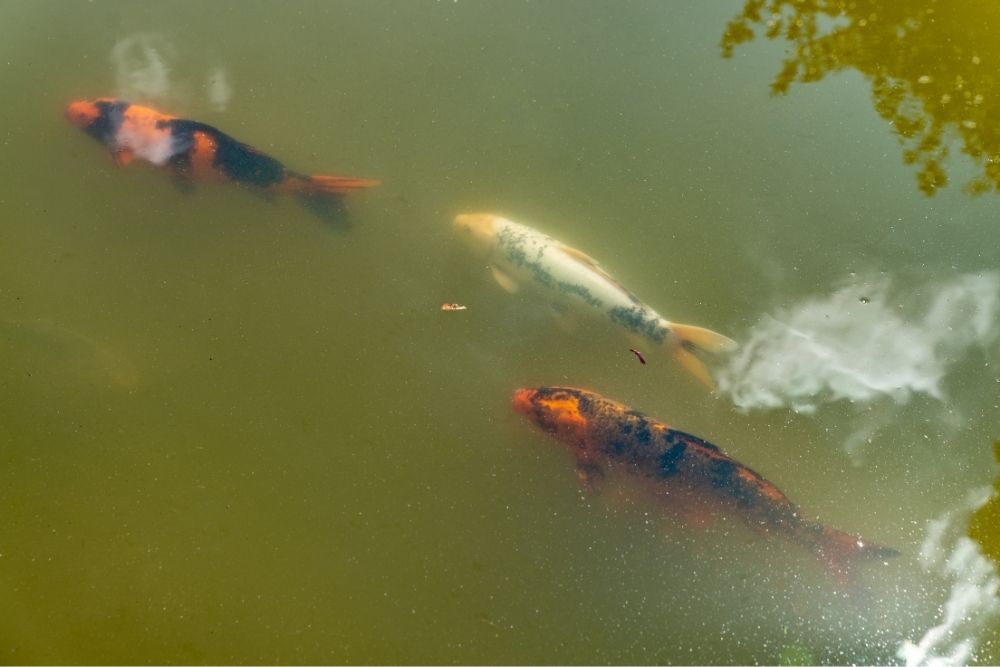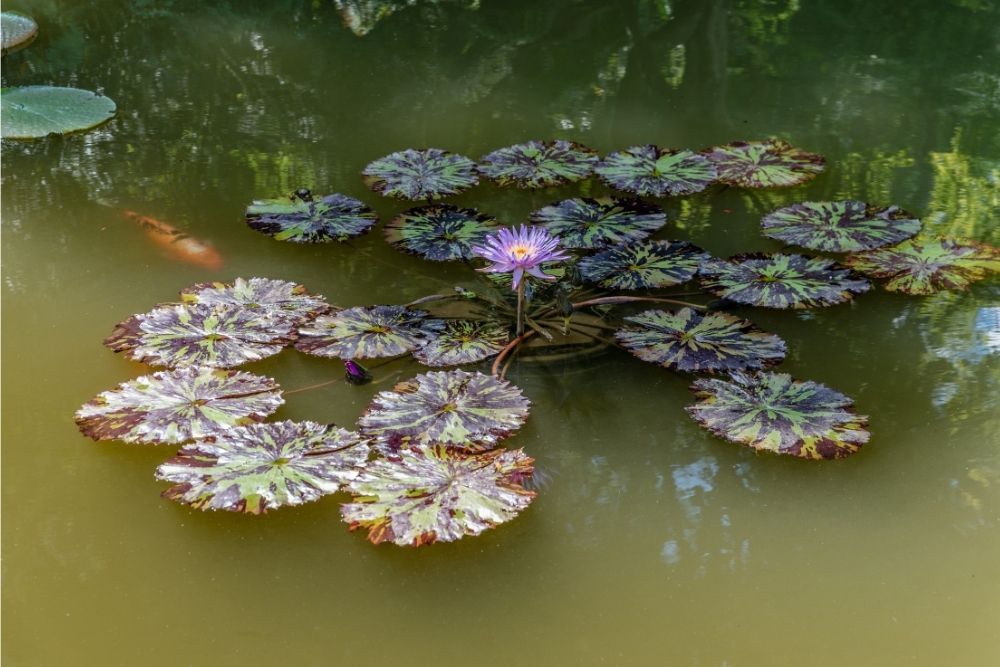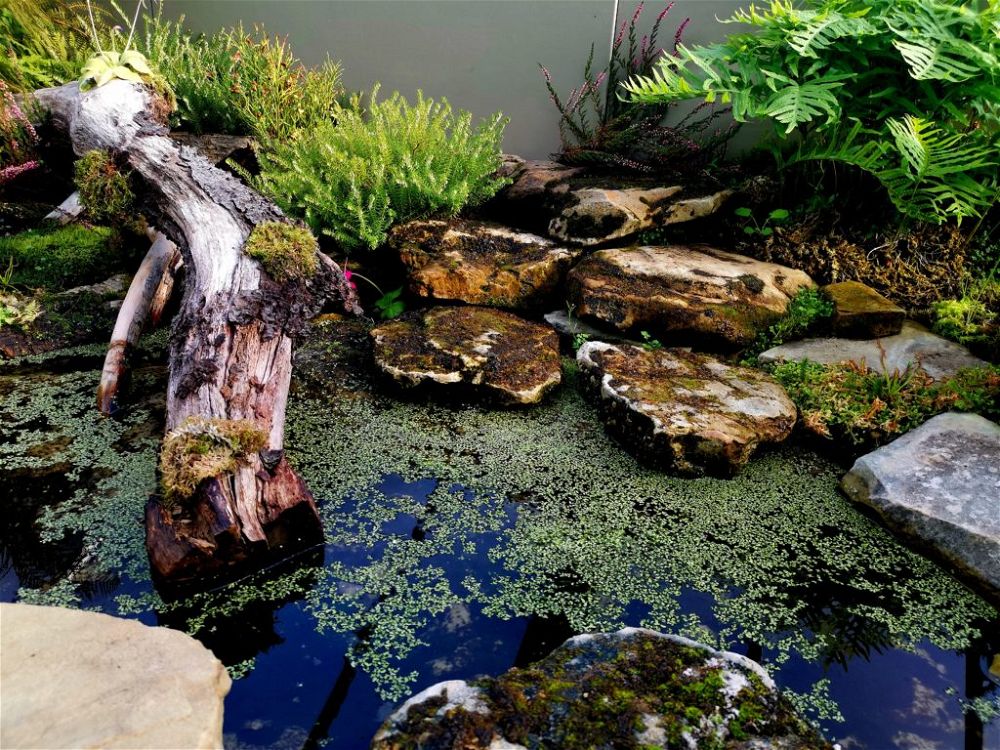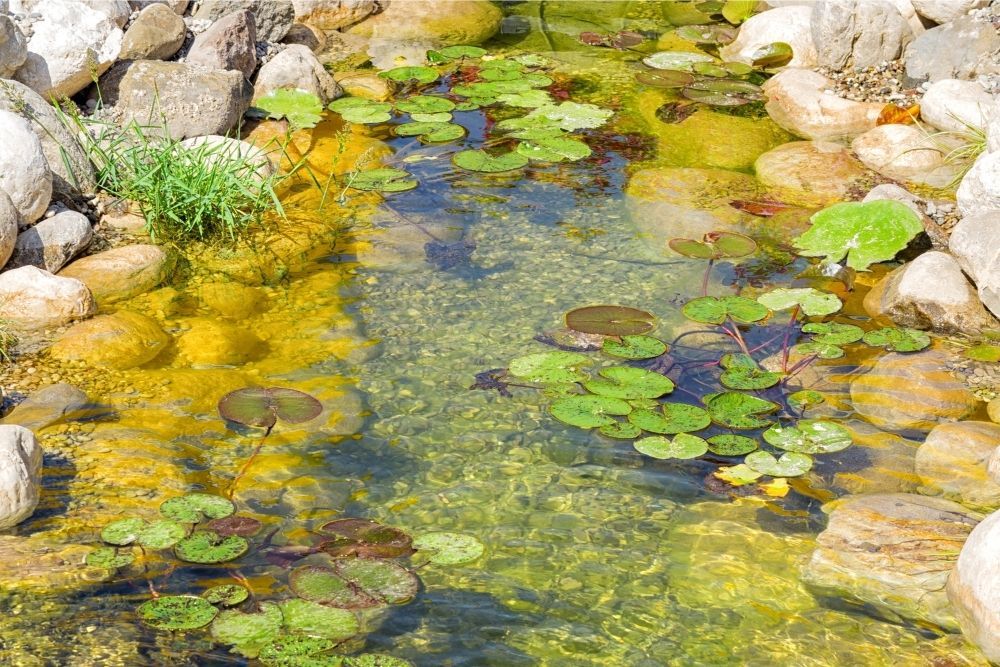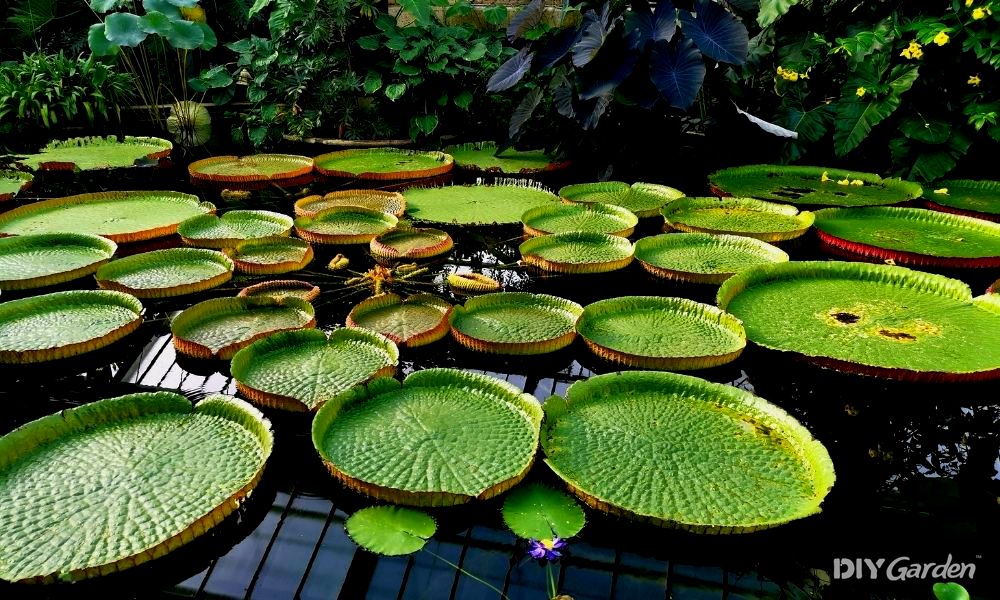
When you envision a pond, you picture crystal clear water where you can see into the depths. Unfortunately, some of us aren’t so lucky.
Is your pond plagued with murky water? Cloudy water may indicate a problem with your pond. And it’s not particularly easy on the eyes, either, is it?
Let’s pinpoint exactly what’s wrong with your pond. Then, we’ll give you heaps of guidance on how to make pond water clear.
Why Do I Have Murky Pond Water?
Cloudy and murky pond water is caused by an accumulation of organic and inorganic particles. Maybe your pond was fine during the colder months, but now it’s warmer, it’s going murky? That’s totally normal; a pond’s ecosystem is more active in the warmer season.
But why, oh why, does this accumulation occur? There are numerous potential culprits. Let’s explore each to get to the bottom of it.
New Ponds
A pond’s ecosystem doesn’t start working just like that. Everything has to work together to form a perfect harmony; this takes time.
When your pond is first becoming established, avoid adding fish to the equation. This can disrupt the natural workings of the organisms within the pond and hinder the development of an ecosystem.
If a new pond is your problem, you’ll notice the water has turned a dark shade of green, and the walls are coated in a foamy, slimy film. If you’ve already added your fish, they’ll likely be gasping for air and refusing to eat.
Algae Growth
Are algae friends or foe? The truth is, algae can be a bit of a pest when it comes to ponds. If you’ve got a green pond, chances are unrestrained algae is to blame.
Planktonic algae are a vital element in the food chain – they’re the first link that starts off the whole ecosystem. That can’t be bad, right?
Well, algae are photosynthetic; they get their energy from the sun. They’re very competitive – they’ll fight other organisms for sunlight, and they’re good at it too. Algae can quickly accumulate, especially in the warmer months – that’s when algae blooms occur.
Not only do algae ruin the clarity of your pond while they’re living, but they also add to the awful gunk once they die. When they decompose, they use oxygen and release carbon dioxide, methane, and sulfur compounds. You don’t want these chemicals in your pond in large quantities.
Water Quality Concerns
So we come back to our pesky foe, algae. When the temperature increases and algae blooms form, this disturbs the pH of your pond.
While algae are alive, they take in a load of carbon dioxide which changes the pond’s pH level. The other organisms in the ecosystem depend on a particular pH, so they’re likely to struggle if there’s a sudden change.
Surplus Dirt and Detritus
You’ve got all sorts of organisms, like fish and frogs, adding to the detritus. The waste that’s excreted or disturbed at the bottom of your pond can linger in the water, causing that cloudiness that has you so vexed.
Murky water can also be caused by structural problems. If the edges or bottom of your pond aren’t structurally sound, this could cause extra debris to fall into the water. This is particularly the case for mud ponds.
And are you suffering from excessive rainfall? Heavy rainfall can introduce more dirt into your pond and settle at the bottom, pushing the gunky water to the top.
Bacteria Growth
Bacteria is a common culprit of murky ponds. Just like algae, bacteria quickly accumulates.
But it’s not all bad; bacteria can have some use. Bacteria work through the detritus, breaking down organic matter, which can keep the excess waste under control. Or, it can reproduce and reproduce until it’s out of control.
Are You the Problem?
Keep in mind that maybe you’re the issue. We fish owners want to make sure our aquatic friends are getting enough food. Plus, it’s fun to watch them gobble it up, right? But giving fish more food than they can eat can add to your pond’s waste.
And rather than picking the cheapest fish food possible, splash out a little. There are components in cheaper fish food that pass straight through the fish’ gut and out the other end. It’s not the most effective food for your fish, and it’s clouding up your pond.
How to Clear Murky Pond Water
Hopefully, now you’ve figured out what your issue is. But this knowledge is useless if you don’t know what to do about it. So let’s find out what you can do.
When combatting murky water, you can go one of two routes:
- Organic (chemical-free)
- Chemical treatment
It’s always better to keep your pond chemical-free, but if you’re strapped for time or don’t want to purchase expensive pond-cleaning products, chemicals can be a good alternative.
Chemical-Free Method
Cleaning your cloudy pond water naturally is a straightforward, 4-step process.
Step 1: Check Water Quality
The first step is to identify if your pond’s water quality is in tip-top shape or whether it could do with some love. This step is great if you’re still unsure what’s causing your murky water.
You can pick up a pond testing kit in any fish shop or online. It’s a quick and effortless way of checking your pond’s pH, carbonate hardness (also known as KH), ammonia and nitrate levels.
If your pond is fishless, you’re aiming for a pH of around 6 – 8.5. If it’s swimming with fish, 7 – 8 is a better range.
Step 2: Get Rid of Gunk
You know all that excess organic and inorganic material we spoke about earlier? Yeah, that has to go.
A pond skimmer is an excellent purchase if you’ve got a gunky pond. It removes the organic material before it completely decomposes and turns into gunk.
Prevention is your best bet for ensuring you don’t have to continue dealing with sloppy sludge – get yourself some pond netting to stop organic material from falling in.
But if your pond is already afflicted with a severe case of sludge, prevention isn’t helpful right now! To remove the gunk, you’ll need a pond vacuum. A pond vacuum will suck up all that excess material so your pond can go back to being crystal clear.
Step 3: Upgrade Your Filtration
It’s a pond filter’s job to remove excess particles in your pond. So if you’re suffering from a build-up, the problem could be your filtration system.
A biological filter utilises bacteria. It encourages the decomposition of organic matter into ammonia, then into nitrates. If your filter isn’t doing its job, ammonia levels can increase, and organic debris can accumulate.
If your pond test kit displayed an unusually high ammonia level, take a look at your filtration system. To ensure your filter is working effectively, check:
- Pond filter size – does it match your pond size and the amount of fish in it?
- Filter media – it’s easy for gunk to get on your filter media and reduce its effectiveness. Check whether this needs replacing.
Step 4: Take Action Against Algae
Some people like the look of green algae. But when it takes over your pond, enough is enough. To take action against algae, arm yourself with a UV pond clarifier.
It uses ultraviolet light to destroy algae below the surface of your pond. Just mount it to your pond, and it’ll do the hard work for you!
Chemical Method
If you’re strapped for cash and the sound of purchasing a test kit, pond vacuum, and pond clarifier sends your head in a spin, chemicals may be a better option for you. Chemical pond cleaners can do the same job at a fraction of the price.
Below are the products we recommend.
Envii Pond Klear
Envii Pond Klear specifically targets green water. It’s effective and practical. It actively groups excess particles together, then the combined weight of these particles causes them to sink to the bottom of the pond. They’re then gobbled up and broken down by bacteria.
One bottle will cover as much as 20,000 litres of water, and it works in a wide temperature range (4°C – 40°C)!
Evolution Aqua Pure Pond
This pond cleaner does what it says on the tin – it keeps your pond looking pure. It’s great for the fish and smells delightful too!
Just add it to your filter, and it’ll start removing ammonia and nitrates straight away. The bottle is enough to cover 10,000 litres.
Oase AquaActiv PondClear
Similar to Envii Pond Klear, this product works by binding extra particles together. The only downfall with this product is that you’ll need a net to clear up the particles that get grouped together.
Oase AquaActiv PondClear helps to maintain a crystal clear pond and restores the ecosystem to a healthy balance.
For more information on these cleaners, look at our “What Is The Best Pond Water Treatment?” article.
Investigate, Take Action, and Be Patient!
You’ve come here because your pond’s lacking lustre. It’s looking swampy green rather than crystal clear. Maybe your pond’s ecosystem hasn’t become established, or it’s dirtied with a plethora of debris, algae, or bacteria.
Are you the problem? Is overfeeding your fish causing a murky pond? Perhaps your water quality is subpar.
Whatever the reason, you have the power to stop it! Either by organic or chemical means, you can restore your pond’s water to the crystal clear appearance you so crave.
But be patient. Getting the right balance in a pond takes time – it’s not an instant cure. If you’ve done all your tests and you can’t find an issue, chances are there isn’t one! Just give your pond time to settle, and who knows? It may sort itself out.
If you enjoyed this and want to know what pond plants to buy to keep your pond clean and clear, check out our article on Types of Pond Plants.
